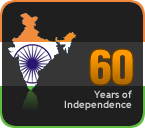A month back Raja and myself were proceeding to Pradeep’s Khet for a lunch gathering. His farm is located in Haryana, beyond Gurgaon, near the Sultanpur Bird Sanctuary and as we approached it, Raja pointed out to a red-tiled roof in the distance and said, “Look Ma, there is the Meda”.
The Meda is Pradeep’s brainchild. It is a two-storeyed building, the ground floor in brick and mortar, the top floor all wood, as in any old house in Kerala., In fact, it was an old house from Kerala. Raja told me it belonged to some friends of his, who were selling it. On a whim, Pradeep decided to buy it and transport it to Delhi.
Panel by panel -- including the wooden floor, the doors, the veranda railings -- as also the rafters of the ceiling and the red tiles of the roof, were dismantled, packed and trucked to the Khet, where it was then reassembled. It took a team of six Asaris (carpenters), their leader a veteran traditional temple builder, more than two months to do the reassembly, two months when Pradeep looked after them with loving care, even getting one of their wives to come over and cook “special Kerala” food for them
Very proudly, Pradeep took me inside and showed me around just like parents show off their new-born babies.And he has every reason to be proud. The Meda is a heritage building from the outside, on the inside it glimmers with every modern convenience, even in the bathrooms.
And then there was this wrought iron spiral staircase which led to the first floor. On our way to the Khet, Raja told me that I might have to be satisfied with seeing the Meda from the outside as I might not be able climb this staircase. But with Pradeep pulling me from the front and Raja prodding me from behind, I managed to do it.
And how beautiful the upstairs was: the wooden floors, the cosy bedrooms, the long verandas on either side with their round wooden pillars. It made me feel as if I was back in a Kerala Tharavad.
 |
| With Pradeep on the balcony |
It took me back to my childhood days and to my grandparents’ home in Karamanai—a cluster of Brahmin Agraharams with row-houses. In those houses the outer walls were brick and mortar but the floors, the staircase and the partitions that divided the upper storey into two or three rooms were all constructed of wood. We children were always cautioned to play there without making any noise like jumping around or running about. And for us it was a treat to be allowed to go upstairs and hunt around among the hundred and odd things like old newspapers, utensils and other things stored there, with the thought that some day they would come handy.
Among the many odd things that kindled our interest, were some wooden dolls –Marappachis of various sizes the tallest about ten to twelve inches in height and smallest not even two inches high. These dolls were our attractions there. They were whittled out of some dark brown wood and unbreakable. We used to have so much fun dressing up them in odd bits of rags and making chains for their necks with some Pasimani. Nowadays these Marappachis are seen only in the Bommai-Kolu during Navarathri.
As I am writing this one incident comes to my mind -- how I got the nickname Chothi. Even today I am unable to figure out the meaning of that word. This happened when I was three or four years old, on a visit to my grandparents’ home. I was warned against going up the stairs but ignoring the words of elders, I followed them up. Having climbed three steps I tripped or lost my footing and fell down on my back with my right arm and elbow caught under my back! How I was taken to a bone setter and had my right arm in a sling for six eight weeks is another story. Well, my elder brother it was who started calling me Chothi because of my broken arm and that nickname stuck with me for a few years!
I have allowed my memory to wander away from the main point. I am afraid I have a box full of memories in my brain and like Pandora’s Box once opened, it is difficult to close it. Thank God: unlike Pandora’s Box my memory box is only full of harmless stories.










